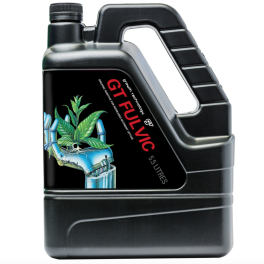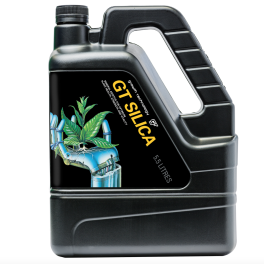Shop
Showing 57–58 of 113 results
-
GT FULVIC 1L
$15.00Quick View1L = $15
5.5L = $40
GT FULVIC
- Nature’s ultimate organic additive
- Helps increase nutrient uptake and translocation within plant
- The key to supercharged plant growth
What is fulvic acid exactly?
Fulvic acid is a black powder mined from peat and coal deposits. It is in fact a mixture of several acidic organic chemicals and not just one compound. Fulvic acid is biochemically active and has some effect on plant growth and development. The chemicals are the products of decay from plants that lived millions of years ago. GT Fulvic is a concentrated water based solution of fulvic acid. It needs to be diluted before use.
What does it do then?
The main benefit of putting GT Fulvic into a hydroponic nutrient solution is that it increases the uptake of mineral nutrients by the plant. This is of great benefit to the plant and produces several effects including enhanced cell growth which naturally leads to increased plant growth.
Fulvic acid also increases the rate of transportation of minerals within the plant. Cell membrane permeability to minerals is increased and cell division is stimulated.
How does it do it?
Fulvic acid interacts with nutrient minerals by acting as a chelating agent. It forms a loose bond with the mineral that has the effect of making the mineral more readily absorbed by the roots. Fulvic acid is absorbed along with the mineral and the chelating effect also makes the transport of the mineral within the plant more efficient. These effects make for better plant growth.
OK, how do I use GT Fulvic?
GT Fulvic is very concentrated and needs to be diluted in nutrient solution before it can be used by the plant. GT Fulvic should be added to the nutrient solution whenever a fresh nutrient batch is made.
What about dose rates?
Fulvic acid is most effective in the concentration range between 50ppm and 125ppm in the nutrient tank.
2ml per litre of GT Fulvic = 50ppm fulvic acid
3ml per litre of GT Fulvic = 75ppm fulvic acid
4ml per litre of GT Fulvic = 100ppm fulvic acid
5ml per litre of GT Fulvic = 125ppm fulvic acid
Heavy feeders should be run at higher concentrations, lighter feeders at lower concentrations.
How often should I dose the tank?
Add GT Fulvic whenever a fresh tank of nutrient is made. With recirculating systems, GT Fulvic should be added each week. Run to waste systems only need GT Fulvic once when the nutrient solution is made.
Any precautions?
GT Fulvic is not dangerous, however good practice indicates care should be taken whenever we use chemicals.
What should I expect from using GT Fulvic?
The chelating effect of fulvic acid will produce higher mineral levels in the plants with benefits to plant growth, yield and plant health.
-
GT SILICA 1L
$15.00Quick View1L = $15
5.5L = $40
Silicon is the second most abundant element in the earths crust making up a component of most rocks. Plants absorb silicon from silica that has dissolved into the soil water. As you can imagine the concentration of silicon in soil water is not that high because rocks do not tend to be all that soluble. Silicon concentration in soil water generally does not get above 20 ppm and this is the level we recommend for hydroponic nutrient solutions.
Silicon is a beneficial plant nutrient found in virtually all soils but not, until now, in hydroponic nutrient solutions. Silicon will strengthen plant cell walls and become a barrier against water loss, fungal infection, particularly mildews, and insect and mite attack.
Silicates are very alkaline and care must be taken with its use. Always check the pH after silicon has been added to the tank.
Handling and Care
- always wear gloves and eye protection
- always store in a locked cupboard
- keep away from children
- dilute with water before adding to tank
- safety data sheets are available
What is it exactly?
GT Silicon is a concentrated mixture of silicic acid and potassium hydroxide. This is often referred to as potassium silicate. Its purpose is to add silicon to hydroponic nutrient solutions.
What does it do then?
The effect of silicon comes from the fact that plants deposit silicon in their cell walls and this has the effect of strengthening the cell wall which acts as a barrier between the inside of the plant cell and the environment. The stronger this barrier the better a plant can resist attacks from insects and fungi and also the increased cell wall rigidity gives better tolerance to heat and water stress.
What’s it all about?
Silicon belongs to a class of plant nutrients termed “beneficial nutrients”. These nutrients are not totally essential to the plant but the plant will grow better if it is present. It has even been claimed that the absence of silicon from nutrient solutions constitutes a form of stress to the plant.
OK, how do I use GT Silicon?
Silicon cannot be added directly to concentrated nutrient solutions because it will precipitate from the solution and be unavailable to the plant so it has to be supplied as a separate additive. If GT Silicon is diluted in the nutrient tank at the rate of 1ml per litre of nutrient solution, it will give a concentration of 20ppm silicon, the usual Dutch recommendation.
How often should I dose the tank?
For run to waste systems, add the GT Silicon when making the nutrient solution. For recirculating systems add the GT Silicon to the tank on a weekly basis.
Any precautions?
Yes. GT Silicon is very alkaline. Always check the pH of the nutrient solution after the silicon has been added and correct if necessary. Don’t get it on your skin or clothes. Good practice indicates care should be taken. Keep away from children.
What should I expect if I use GT Silicon?
Silicon provides real benefits to plants, the main one being increased resistance to pathogens.


 0410 844 527
0410 844 527
